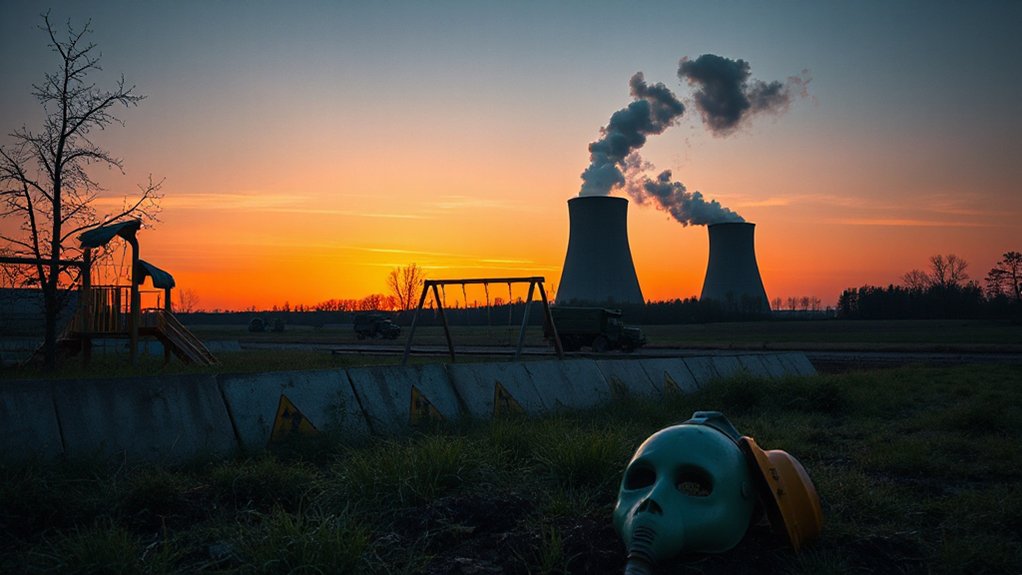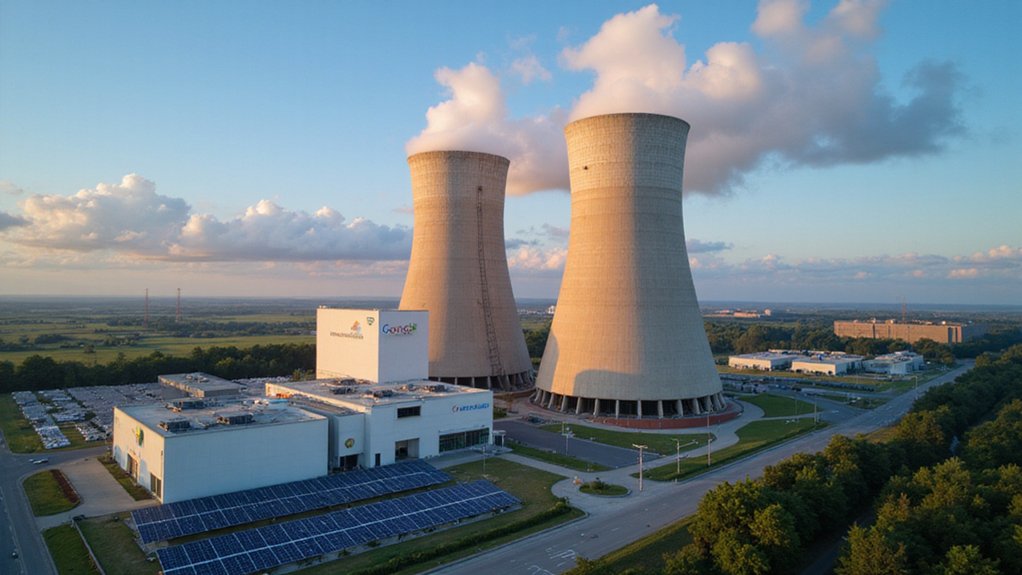Every nuclear expert’s worst nightmare came true on March 3, 2022, when Russian forces stormed the Zaporizhzhia Nuclear Power Plant. Not just any attack – the first full-scale military occupation of an operational nuclear facility in history. Let that sink in.
Six massive reactors, now under the control of troops with heavy weapons and a concerning disregard for nuclear safety protocols. What could possibly go wrong?
Six colossal nuclear reactors controlled by armed soldiers who treat safety protocols like optional suggestions. Terrifying combination.
The situation quickly deteriorated. Communication lines with Ukraine’s nuclear regulator? Cut. IAEA inspections? Limited, with some areas completely off-limits. Russian forces reportedly stashed weapons inside turbine buildings and mined the perimeter. Because apparently, explosive devices near nuclear reactors seemed like a brilliant idea to someone.
All six reactors now sit in cold shutdown – a deceptively peaceful-sounding term. The nuclear reactions are stopped, but that radioactive fuel? Still hot. Still dangerous. Still requiring constant cooling.
And those cooling systems need power – power that’s been repeatedly compromised by shelling that’s damaged critical infrastructure. The plant that once had ten external power lines now sometimes operates on just one. One line. For Europe’s largest nuclear facility. Talk about cutting it close.
Damage reports read like a disaster checklist: nitrogen-oxygen unit, high-voltage lines, fire station, fuel storage facilities – all hit. The IAEA has documented multiple incidents where the plant lost external power entirely, forcing emergency systems to kick in. Ukrainian Energoatom staff continues to operate the plant despite the Russian occupation. Cooling failure isn’t just a theoretical concern; it’s a meltdown waiting to happen.
International response has been predictably bureaucratic. The IAEA Board passed a resolution urging Russian withdrawal in September 2023. Russia and China opposed it. Shocking.
Meanwhile, plant workers operate under duress, with reports of intimidation by occupying forces. They’re trying to prevent a continental disaster while fundamentally being held hostage.
Europe watches nervously. This isn’t just Ukraine’s problem – a major nuclear incident would spread radiation across multiple countries. Recent attacks on April 7 marked the first direct targeting of the facility since November 2022, reigniting fears of catastrophic consequences. No borders for nuclear fallout. Just consequences.
References
- https://en.wikipedia.org/wiki/Zaporizhzhia_Nuclear_Power_Plant_crisis
- https://press.un.org/en/2024/sc15662.doc.htm
- https://www.brookings.edu/articles/what-to-do-about-the-zaporizhzhia-nuclear-power-plant/
- https://www.nti.org/risky-business/what-happened-at-ukraines-zaporizhzhia-nuclear-power-plant-and-what-are-the-implications/
- https://pmc.ncbi.nlm.nih.gov/articles/PMC12039645/
- https://bellona.org/news/nuclear-issues/2025-10-is-the-zaporizhzhia-nuclear-plants-longest-blackout-a-scheme-for-russia-to-siphon-off-its-power
- https://www.oecd-nea.org/jcms/pl_66130/ukraine-current-status-of-nuclear-power-installations
- https://interestingengineering.com/energy/zaporizhzhia-nuclear-plant-chernobyl-disaster









